The WASH Performance Index Report - Water Equity
Contents
[hide]Country performance in improving water equity
- Country rates of change (progression or regression, percent per year) in equity of access to water were compared to the performance frontier (best-in-class performance) to generate a country value for performance in improving water equity. For the 2015 Index we used the gap in rural and urban coverage as our indicator of equity.
- Country performance in improving water equity is not associated with GDP per capita while the gap in improved water coverage is associated. This suggests the Index enables fair comparison between countries at different levels of water coverage.
- Top performing countries are Belarus, Sierra Leone, Liberia, Niger, Zimbabwe, El Salvador, Tanzania, Tajikistan, Mongolia, and Uruguay.
- Bottom performing countries are Burkina Faso, Honduras, Namibia, Jordan, Kyrgyzstan, Mozambique, Gambia, Timor-Leste, Cape Verde, and Djibouti.
- There were no associations between country performance in improving water equity and the country characteristics or governance indicators we explored.
Country rates of change (progression or regression, percent per year) in equity of access to water were compared to the performance frontier (best-in-class performance) to generate a country value for performance in improving water equity. For the 2015 Index, we used the gap in rural and urban coverage as our indicator of equity. Values for country performance in improving water equity were calculated for 129 countries. Figure 7 summarizes the values by country.

Figure 8 shows all of the rates of change used in defining the performance frontier for water equity. Points defining the performance frontier were Ethiopia (2001), Mauritania (1995), Bolivia (2000), Uruguay (2007), and Belarus (2011). Figure 8 shows the latest rates of change from each country.
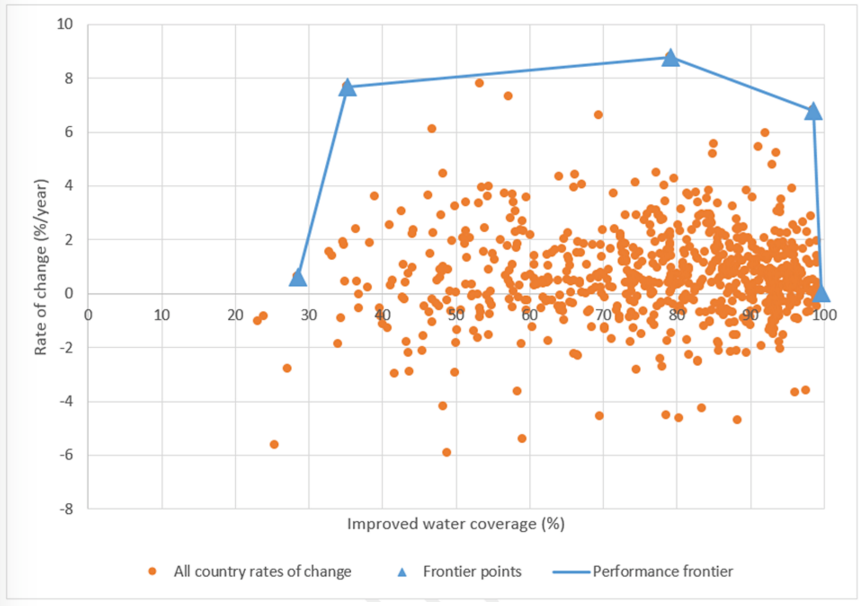
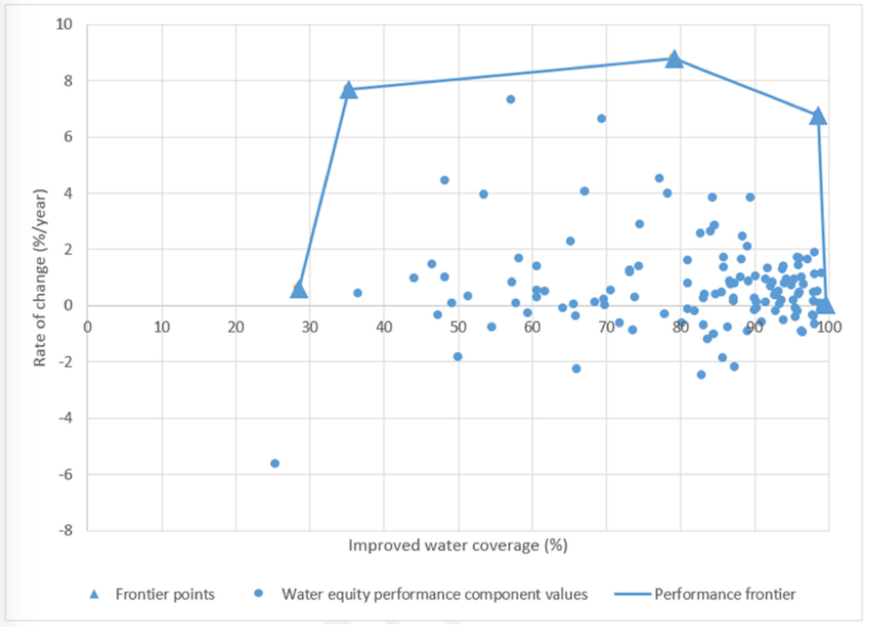
Top and bottom performing countries
Top performing countries for performance in improving water equity are Belarus, Sierra Leone, Liberia, Niger, Zimbabwe, El Salvador, Tanzania, Tajikistan, Mongolia, and Uruguay. Bottom performing countries are Burkina Faso, Honduras, Namibia, Costa Rica, Jordan, Kyrgyzstan, Mozambique, Gambia, Timor-Leste, Cape Verde, and Djibouti.
Among the most populated countries in the world, Pakistan, Nigeria, and China were among top performers while Bangladesh, Philippines, and Mexico were among the bottom performers.
Alphabetical lists of countries with values for all components and trends are available in the Annex.
Correlations
County performance in improving water equity is not significantly associated with any of the governance indicators or country characteristics, including GDP per capita (Figure 10). In contrast, there is a positive association between GDP per capita and the gap in coverage (Figure 11). This suggests the water equity performance is a fair comparison between countries at different levels of coverage.
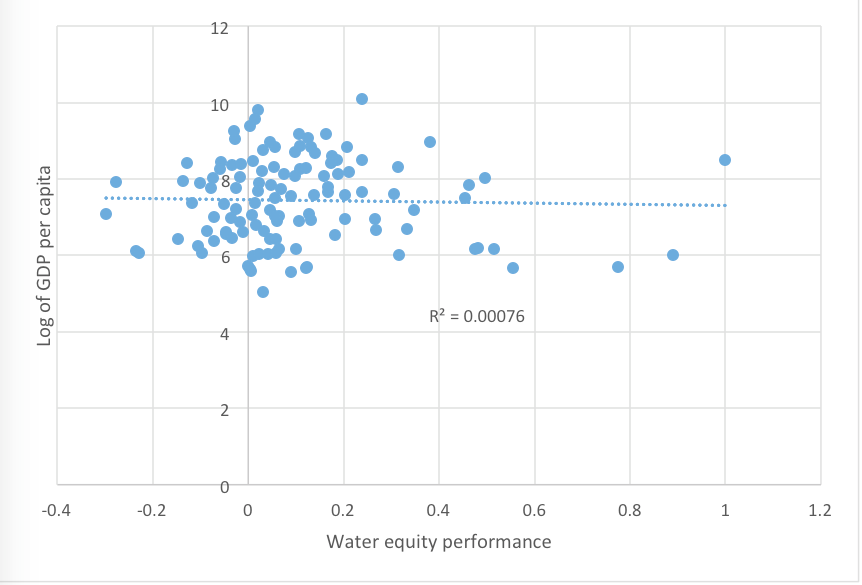
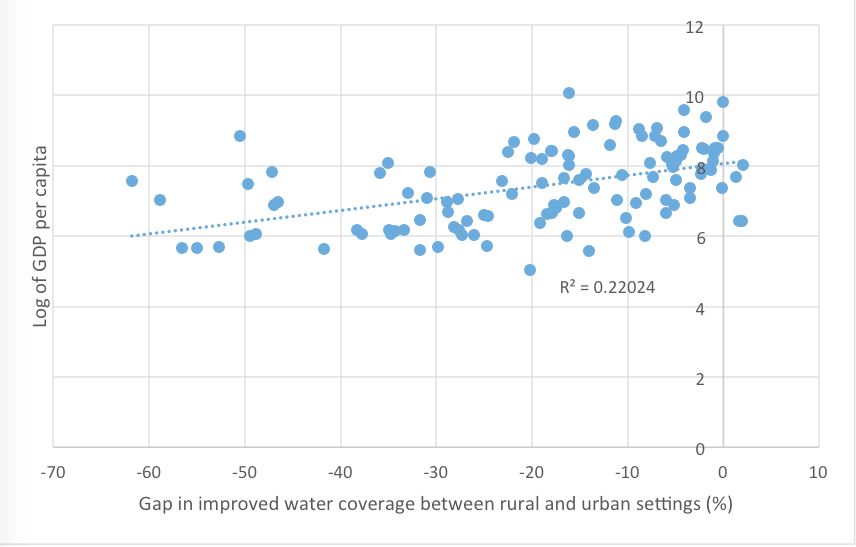
Trends in performance
Table 3 shows the trend in country values for water equity performance. The trends suggest countries with a positive value are more likely to have improved over time (35%) rather than deteriorate. Conversely, 47% of countries with a negative value deteriorated over time rather than improved. This suggests, for water equity performance, that improvement and deterioration are long-term phenomena – suggesting that countries with positive values continue to improve over time while countries with negative values continue to deteriorate over time.
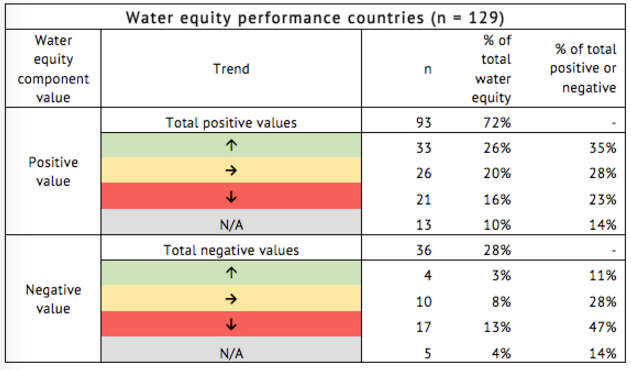
Acknowledgements
- The WASH Performance Index Report, The Water Institute - University of North Carolina.

